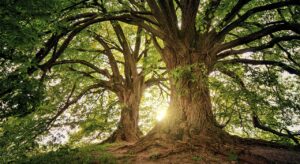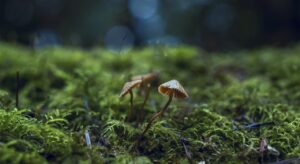In order to make it easier for scientists to describe certain groups of plants, some special names have been adopted. Examples:
- Brioflora – the flora of mosses;
- Mycoflora – the flora of lichens;
- Algoflora, the flora of algae;
- Dendroflora – flora of woody plants.
There are various methods for studying flora: geographical, genetic and age analyses. They allow us to make a kind of inventory among plants for further study, conservation and crossbreeding of species.
In Ancient Rome, among the host of gods and goddesses, Flora was especially distinguished. She was responsible for the flowering of plants in the spring and was considered the patroness of all flowers. Today the name of this essence is used in botany, biology, and very often in everyday life. flora in the modern sense?
Traditionally, the word refers to the totality of all kinds of plants, historically growing in a certain territory. Thus, they usually say “the flora of the Earth,” “the flora of Africa.” This may be a modern state of affairs or a pre-existing one. But to be more specific about what flora is, modern botanists mean by this word only the vascular plants found in an area. Other species are not considered in this totality. What is interesting, the local flora does not include those flowers that grow in houses on window sills, as well as those in greenhouses, winter gardens or greenhouses – that is, in places where climatic conditions are created by man.
There is a separate science, which explains clearly what the flora of each particular region. It studies each plant individually, as well as the entire landscape symbiosis within a certain territorial framework. Such a science is called “floristics.” Specialists in this field are engaged in making outlines – lists of plants and their brief descriptions for each individual area.
Historically, the term was first used back in the 17th century by the botanist Michael Boim. And then he picked up the baton from the famous scientist Carl Linnaeus, who created a vast work devoted to the flora of Lapland. But not only flowers were described in this book. Flora, as understood by Linnaeus, also included mushrooms, and not just plants alone. All in all, 534 species were described in his monumental work.
But in addition to the obvious and remarkable part of the plant world, this term also encompasses the invisible part of it. Pictures of flora invisible to the naked human eye can be found on the pages of any microbiology textbook. The term often refers to the totality of all microorganisms inhabiting a body. For example, it is not uncommon in medicine and nutrition to use the phrase “gut flora.
In terms of classification, the totality of plants can be divided into several attributes. So, in terms of origin, distinguish flora indigenous and adventive. From the name it becomes clear that the first of them implies a set of those plants, which inhabited the region for a long time. What is the flora adventive in this case? These are those plants that were introduced, cultivated, or accidentally transferred to the territory of the region not so long ago.
According to the totality of plant taxa, the term is also subdivided into:
- algoflora (algae);
- dendroflora (trees);
- bryophlora (mosses);
- lichenoflora (lichens);
- mycophora (fungi).
Thus, it becomes clear that this term is not limited to flowers alone, as its progenitor-goddess, it is significantly broader and implies the study of the entire plant world, rich and diverse.


